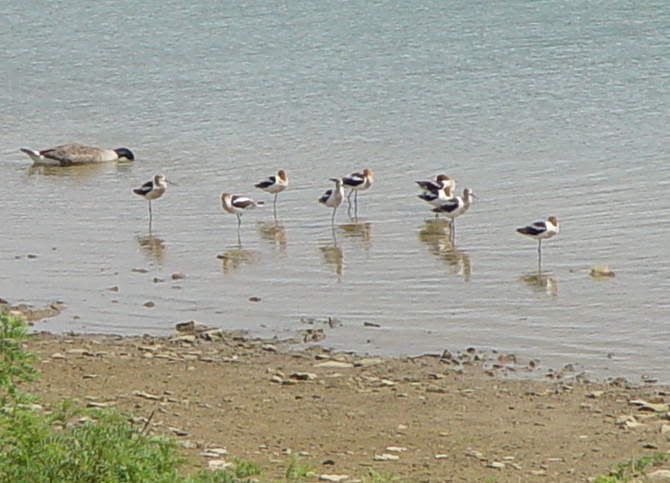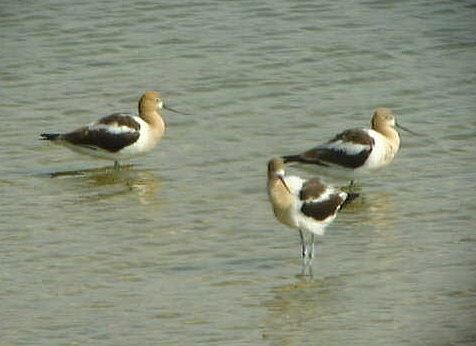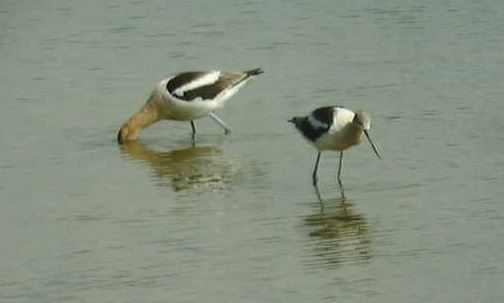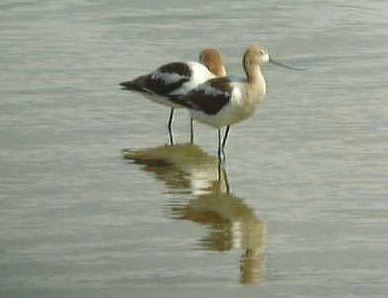

A flock of nine American Avocets were found by Mike Fowles at Beaver Run Reservoir, Westmoreland County soon after some thunderstorms moved through the area in the early afternoon of 23 July 2002. The American Avocets were viewed from the PA 380 overlook at Beaver Run. This photograph was taken with only my Sony DSC-707 digital camera with its lens set at 10X.

American Avocets are very distinctive birds. They have a white body with black on the wings and back with white stripes separating the black sections. The heads of breeding plumage birds are a burnt orange color. The bills are long and upturned at the end. Females tend to have a more strongly upturned bill than the males. This photograph was taken with my Fuji digital camera held up to my Leica spotting scope 32x objective lens with the lens of the camera set at 3x for an effective magnification of 96x.

Another view of some of the American Avocets showing the black sections of the wings and back and the burnt orange heads characteristic of breeding plumage birds. This photograph was taken with my Fuji digital camera held up to my Leica Spotting scope 32x objective lens with the lens of the camera set at 3x for an effective magnification of 96x.

The bird in the front of this photograph has a very pronounced upturned bill. It probably is a female American Avocet. This photograph was taken with my Fuji digital camera held up to my Leica spotting scope 32x objective lens with the lens of the camera set at 3x for an effective magnification of 96x.

This is a nice view of a breeding plumage American Avocet. It likely is a male with its straighter bill. Compare it to the sharply upturned bill of the bird to the rear and left side which is likely a female. The photograph was taken with the Sony DSC-707 held up to the lens of my Leica spotting scope 32x objective lens with the camera lens set at about 6x for an effective magnification of 192x.
Return
to McConaughy's Birding Page
Return to McConaughy's Home Page